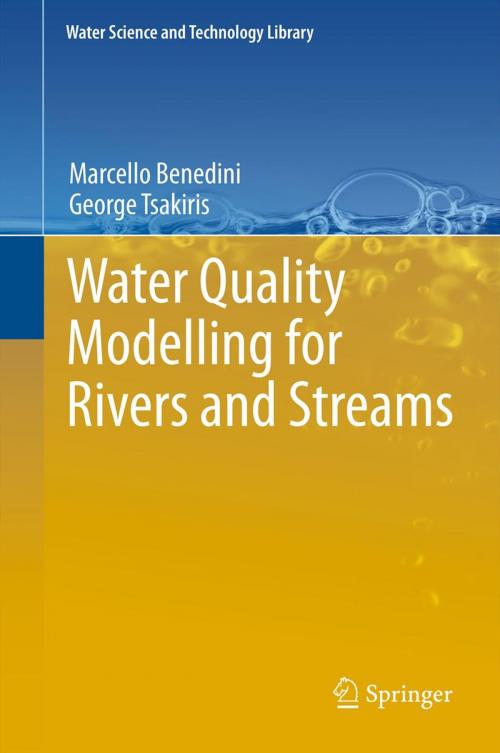Water Quality Modelling for Rivers and Streams
Nonfiction, Science & Nature, Technology, Engineering, Environmental, Science, Earth Sciences| Author: | Marcello Benedini, George Tsakiris | ISBN: | 9789400755093 |
| Publisher: | Springer Netherlands | Publication: | February 11, 2013 |
| Imprint: | Springer | Language: | English |
| Author: | Marcello Benedini, George Tsakiris |
| ISBN: | 9789400755093 |
| Publisher: | Springer Netherlands |
| Publication: | February 11, 2013 |
| Imprint: | Springer |
| Language: | English |
The main objective of the Water Framework Directive in the European countries is to achieve a “good status” of all the water bodies, in the integrated management of river basins. In order to assess the impact of improvement measures, water quality models are necessary. During the previous decades the progress in computer technology and computational methods has supported the development of advanced mathematical models for pollutant transport in rivers and streams. This book is intended to provide the fundamental knowledge needed for a deeper understanding of these models and the development of new ones, which will fulfil future quality requirements in water resources management. This book focuses on the fundamentals of computational techniques required in water quality modelling.
Advection, dispersion and concentrated sources or sinks of contaminants lead to the formulation of the fundamental differential equation of pollutant transport. Its integration, according to appropriate initial and boundary conditions and with the knowledge of the velocity field, allows for pollutant behaviour to be assessed in the entire water body. An analytical integration is convenient only in one-dimensional approach with considerable simplification. Integration in the numerical field is useful for taking into account particular aspects of water body and pollutants.
To ensure their reliability, the models require accurate calibration and validation, based on proper data, taken from direct measurements. In addition, sensitivity and uncertainty analysis are also of utmost importance.
All the above items are discussed in detail in the 21 chapters of the book, which is written in a didactic form for professionals and students.
The main objective of the Water Framework Directive in the European countries is to achieve a “good status” of all the water bodies, in the integrated management of river basins. In order to assess the impact of improvement measures, water quality models are necessary. During the previous decades the progress in computer technology and computational methods has supported the development of advanced mathematical models for pollutant transport in rivers and streams. This book is intended to provide the fundamental knowledge needed for a deeper understanding of these models and the development of new ones, which will fulfil future quality requirements in water resources management. This book focuses on the fundamentals of computational techniques required in water quality modelling.
Advection, dispersion and concentrated sources or sinks of contaminants lead to the formulation of the fundamental differential equation of pollutant transport. Its integration, according to appropriate initial and boundary conditions and with the knowledge of the velocity field, allows for pollutant behaviour to be assessed in the entire water body. An analytical integration is convenient only in one-dimensional approach with considerable simplification. Integration in the numerical field is useful for taking into account particular aspects of water body and pollutants.
To ensure their reliability, the models require accurate calibration and validation, based on proper data, taken from direct measurements. In addition, sensitivity and uncertainty analysis are also of utmost importance.
All the above items are discussed in detail in the 21 chapters of the book, which is written in a didactic form for professionals and students.















